If you are ready to bring a new Great Dane into your home, you may be trying to sort out if buying a boy or a girl will be the better choice for you. I’m going to deep dive into this topic, and help you make the ultimate decision: Male versus Female Great Dane puppy.
Which one is right for you?
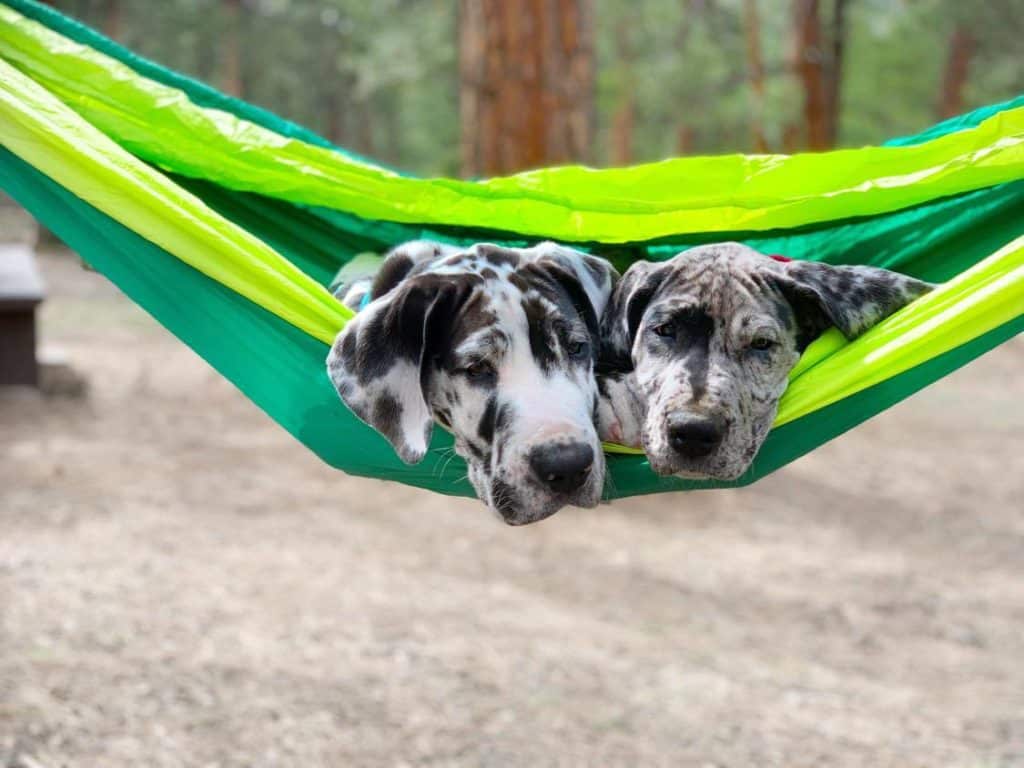
Male Versus Female Great Dane Puppy Size
We’re going to over a few key differences between male and female Danes, including size, temperament, and what to expect.
As a general rule, male Great Danes are actually significantly bigger, beefier, and taller than the girls are with huge feet, broad chests, and giant heads.
When you are considering a Great Dane puppy, you have to take this into account. Some people prefer a bigger dog, others would like a pet that isn’t going to take up so much room in the car!
It’s important to note, however, that although females are generally more petite, they are still very strong giant breed dogs.
Diligent training, proper nutrition, joint care, and the higher costs associated with big dogs (including grooming, bedding, and veterinary care) will still be at play.
Male Great Danes can be up to 36″ at the shoulder and 180 lbs, while female Great Danes can be up to 34″ at the shoulder and up to 140 lbs. Some petite Great Danes can be as small as 100 lbs and 32″ at the shoulder.
Before you purchase or adopt ANY giant breed dog, do your research. One of the biggest reasons that people surrender Great Danes to rescue is that they are surprised how big their cute puppy got.
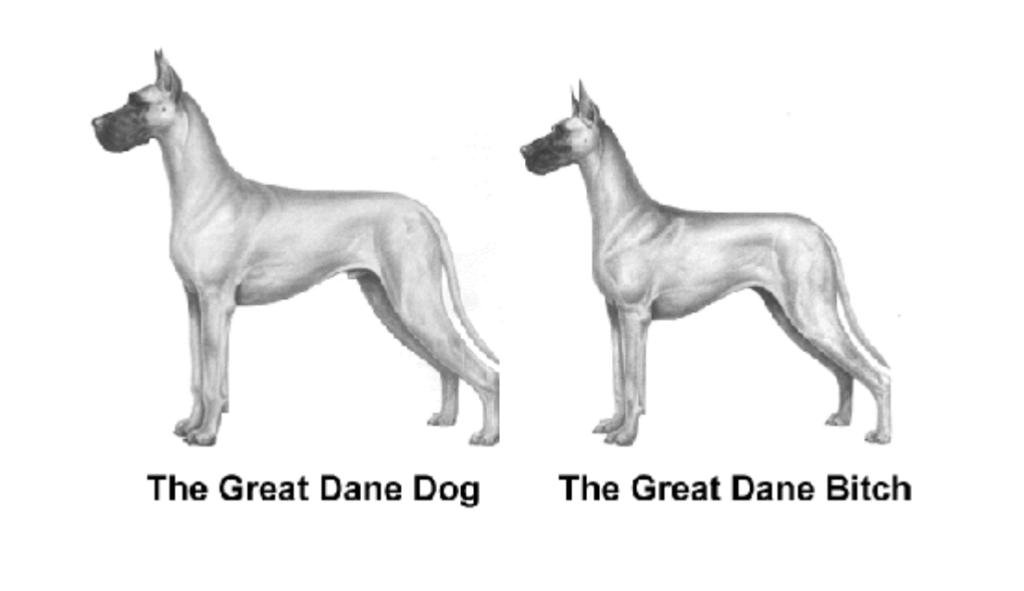
Male vs. Female Great Dane Personalities
The written standard for Great Danes calls for a courageous and friendly dog.
They should never be timid, fearful, or aggressive as these traits make them unstable and a danger to themselves and others.
A well-bred Great Dane will make a great family dog, no matter if it’s male or female!
Female Great Danes tend to be more independent, while male Great Danes tend to be more clingy.
While there are exceptions to every rule, there is a general trend here. Female Great Danes are more likely to have a mature, independent attitude while males tend to be giant babies who worship the ground you walk on.
Both will be affectionate and loving, but it’s well known in the Great Dane community that males will be more likely to suffocate you with affection.
If that’s your jam, get a male! If you like a good balance, get a female. Then keep your fingers crossed because every Dane is different and you don’t know what you’re going to get until they are fully mature.
Both dogs should be family and people oriented, either way. Great Danes can also be great with kids!
Make sure you choose an ethical breeder with a long history of stable, well-built dogs.
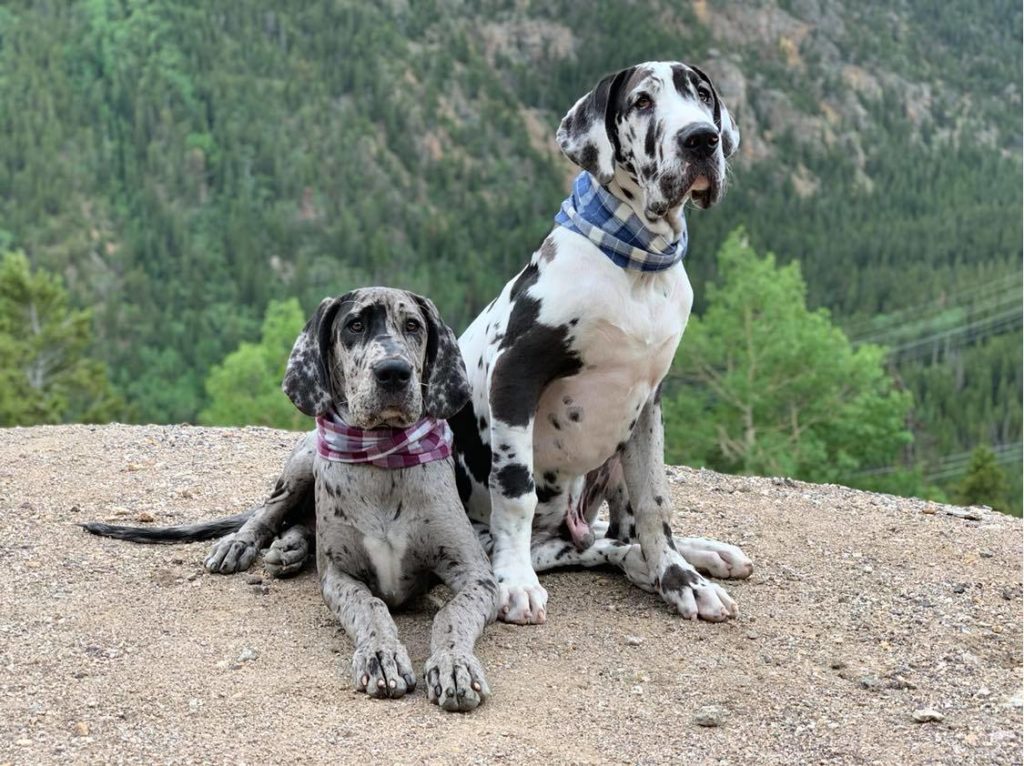
Reproductive Hormones, Spay & Neuter
Some of the biggest differences between male and female Great Danes are related to their sexual hormones and reproductive system. When you are bringing a giant breed dog into your home, everything about this is exaggerated.
If you don’t like the nitty gritty, skip this section, but I believe it’s one of the most important.
Keep in mind that the current recommendation is that giant breed dogs should not be spayed or neutered until 18-24 months of age.
Let’s jump in.
Male Great Danes have large balls. This is alarming to people, and some people are even grossed out by it (especially as they love to scoot back and sit on your lap!).
They also tend to release smegma (a cheesy substance) and random drips, which show up on the hard floors of your home after a few days of not mopping.
If a female dog of any type or size is nearby and in heat, your intact male may absolutely lose his mind trying to get to her. This requires diligence, strict management, and patience. He may even lose weight, shred walls, mark in your home, and jump fences.
Lastly, intact males don’t always get along well with other intact males. Poor breeding can lead to dogs who don’t handle their testosterone well and develop bad behaviors such as marking and aggression. Talk to your veterinarian and a highly qualified dog trainer.
Don’t let these things scare you, though! A well-trained male Great Dane with a good temperament will be friendly and social whether they are intact or not. Don’t believe me? Just attend a dog show and see tons of intact male Danes in the same place, all well-behaved and calm.
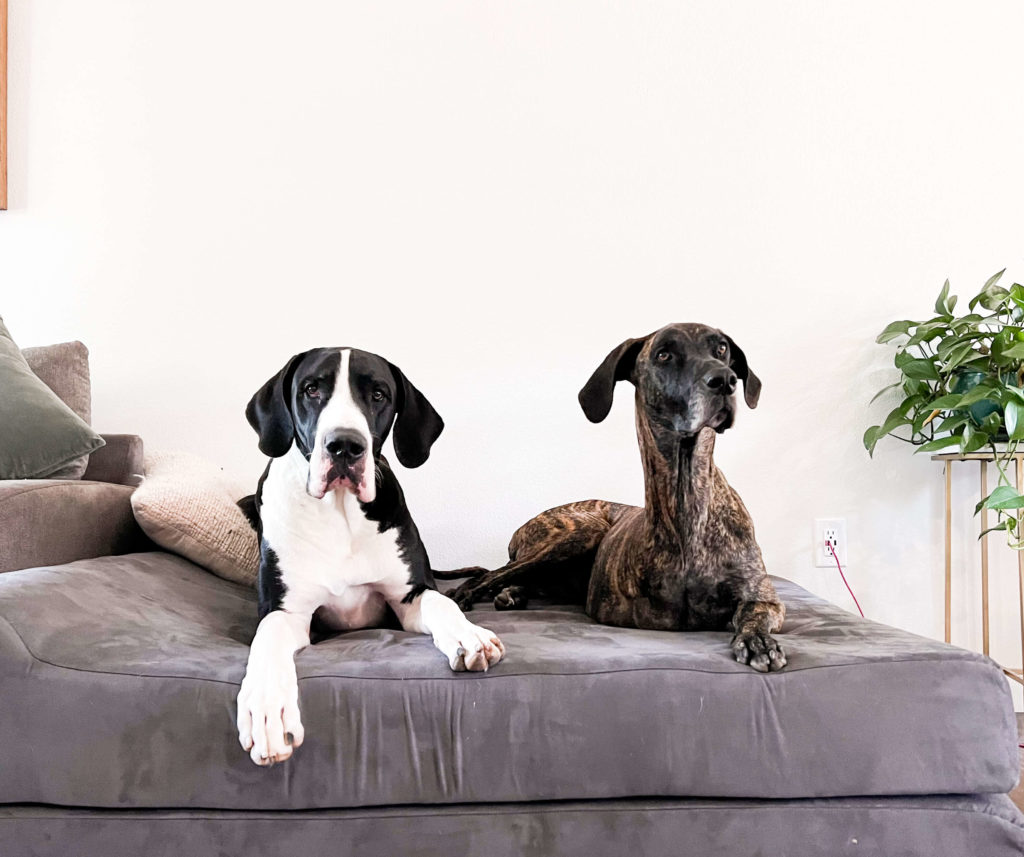
Female Great Danes will experience a heat cycle every 6-12 months on average, starting around 8 months of age. This cycle lasts and 2-3 weeks, and when she ovulates during this cycle she is HIGHLY susceptible to becoming pregnant.
It’s important to note that while ovulation is the time when a dog is most susceptible to pregnancy, sperm can live for up to a week in the reproductive tract and thus, diligent steps must be taken to prevent mating during the entirety of the heat cycle.
A heat cycle can be messy as the dog will bleed for the entirety of this time. All of their reproductive organs will swell, and in some cases, the female may even experience a false pregnancy.
Some females may also become cranky, whiny, and will even mark in the house.
It is highly unethical to breed a dog without full OFA health testing and proof that the dog has good structure and a stable temperament. Accidental pregnancies are avoidable but all to common.
Having an intact giant breed dog is a huge responsibility. Literally.
To handle a female Great Dane while in heat, we recommend size XL reusable dog diapers, lined with period pads or disposable dog diapers.
PRO TIP: It is smart to introduce a Great Dane puppy to these items before they experience their first heat cycle! Consider putting them on your puppy as early as 2-3 months of age, just to practice.
This way they are used to it and not bothered by the diaper when the time comes!
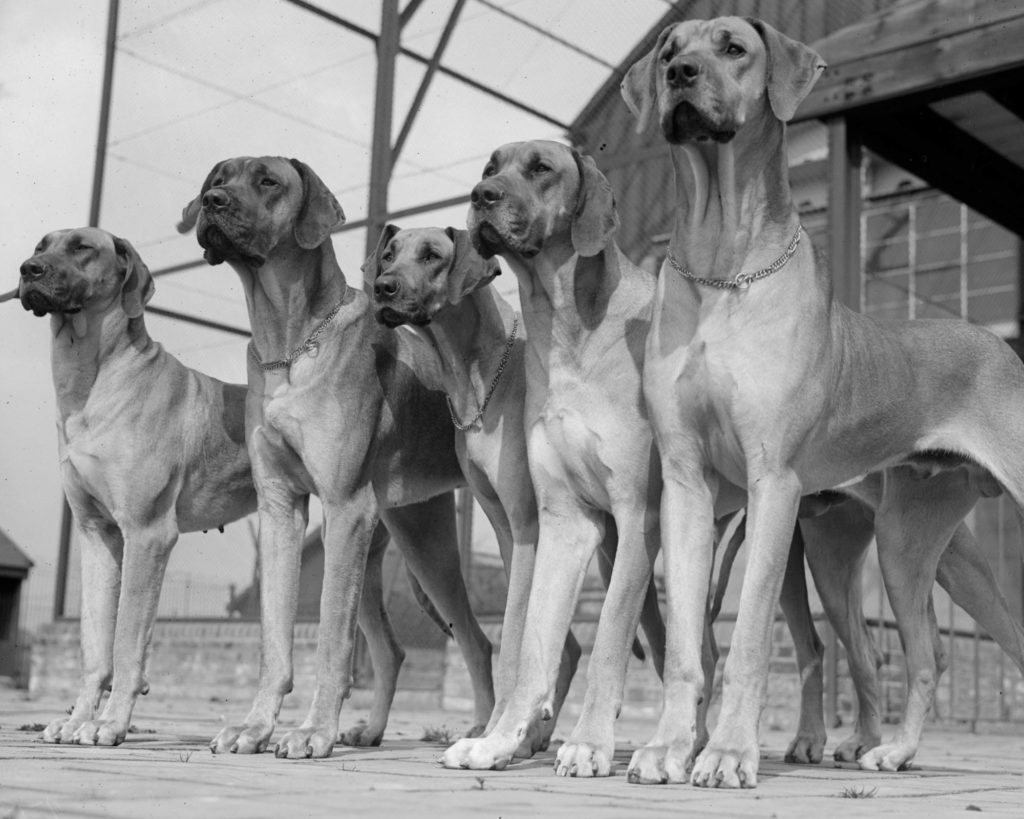
Male vs. Female Great Dane Lifespan
In general, because male Great Danes are larger, they are also more susceptible to problems with their joints and their heart that can lead to a shorter lifespan. Statistically speaking, males are also more likely to experience bloat.
Aggression, stress, and fear in both males and females can shorten their lifespan, making it that much more important to choose a diligent and dedicated breeder.
No matter which you choose, it’s important to focus on up to date training, nutrition, socialization, and health practices. We share a lot of this information on our blog and in our online community!

Should I Get Two Great Dane Puppies at the Same Time?
Many people can’t decide between a male and female puppy, or fall in love with two pups from the same litter, however, this practice is not recommended.
Littermate syndrome is when two dogs who were raised together become co-dependent on each other. This relationship can cause major training issues, as well as aggression that can only be cured by fully separating the dogs from each other for life.
This is not to say that you can’t ever successfully raise two puppies together at the same time, but for the vast majority of owners it’s not the most ideal choice. It’s important to note that ethical and responsible breeders will only sell multiple puppies at once to experienced homes that participate in training, dog shows, and dog sports.
The practice of upselling new owners to purchase a second puppy is a backyard breeding practice, no matter how ‘nice’ the breeder seems.
If you choose to bring home two puppies at the same time, here are some tips:
- If you choose one male and one female, plan to send the male to another home each time the female is in heat, no exceptions. Accidental pregnancies are not cool, especially between siblings! Plus, this is very stressful to the male and he will be happier and safer elsewhere.
- If you choose two males or two females, talk to a dog trainer about same-sex aggression and learn how to prevent it
- Talk to a dog trainer for tips to prevent littermate syndrome, including taking the puppies to separate training classes, socializing and training them independently, feeding them in different places, and developing a personal relationship with each individually.
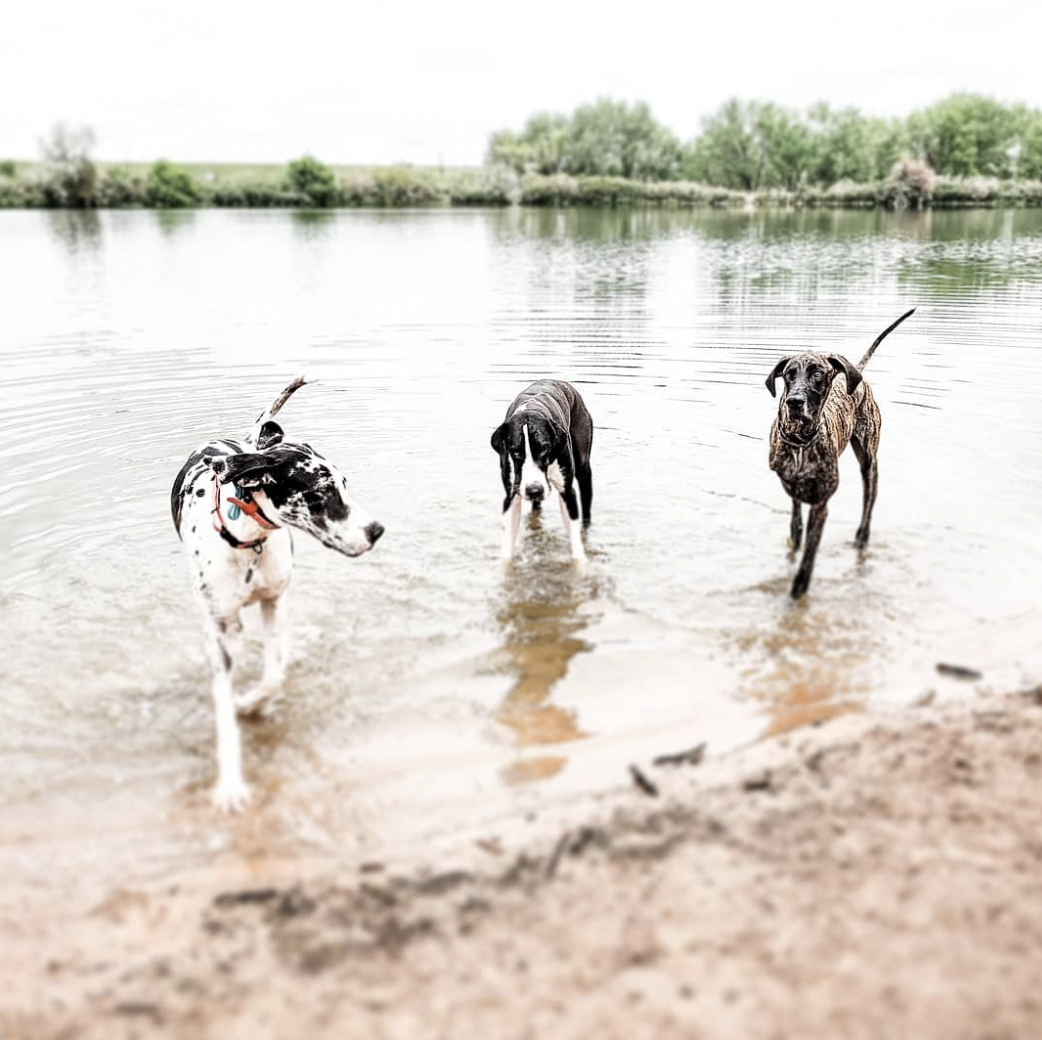
Leave a Reply